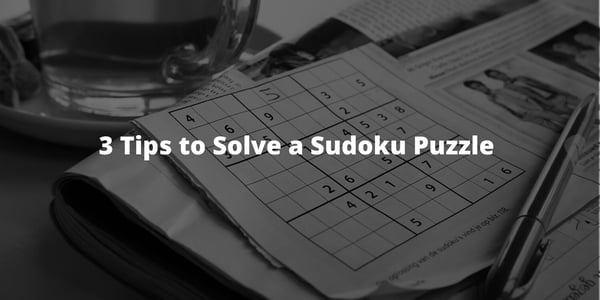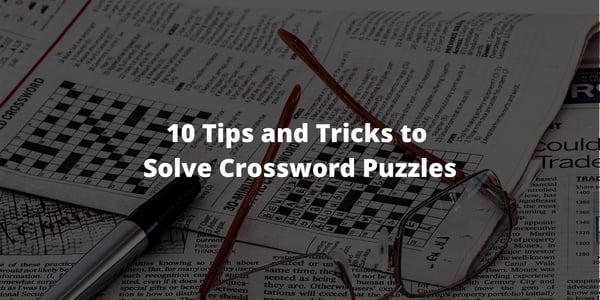Retirement is a golden opportunity to embrace new experiences and find avenues for personal growth....
Keeping Up with Your Reading in the Digital Age: Part 2 – E-books
In Part 1 of this two-part blog series (Audiobooks - click here), I commented on my love of books both as physical objects and fountains of reading pleasure. The advent of e-books challenged and delighted me in both areas.
What is an E-Book?
An e-book is a book in digital form that can be read on a smartphone, tablet, computer, or a dedicated e-book reading device ("e-reader"). The digital file containing the book's contents must be downloaded from the internet onto the device. Once downloaded, the content of the book can be read.
E-book file formats differ. For example, the Amazon Kindle device supports a proprietary format. To read other e-book file formats, a non-Kindle e-reader would be required or an app for a smartphone, tablet, or computer.
Just like physical books, e-books can be purchased or borrowed from the library. E-books can be purchased online from multiple sources; Amazon is just one example. Typically, the purchase takes place directly from the device on which the book will be read.
Libraries loan e-books as well. To borrow an e-book, an app supported by the library (like cloudLibrary or Overdrive) must be downloaded. Check your library's website for information about borrowing e-books.
Left to Our Own Devices
As mentioned above, reading an e-book requires downloading to an electronic device. On a smartphone, tablet, or computer, an app is downloaded and installed. For example, many independent bookstores use the My Must Reads app.
As for dedicated e-readers, there are several brands. Among the most popular are:
There are advantages to using a dedicated device:
- Typically have a longer battery life
- E-book files don't have to compete for space on your smartphone or tablet
- They are often easier to read in daylight
- They have a better screen size to weight ratio. That is, their screen size is bigger than smartphones, and they are lighter tablets.
Some readers may prefer a tablet versus an e-reader despite the extra weight. An e-reader focuses on e-books alone while tablets offer more functions like internet access, e-mail, and videos.
 Taking the E-Book Plunge
Taking the E-Book Plunge
My lifelong love affair with books made me skeptical of e-books when they first appeared. The idea of reading from a screen did not appeal to me in comparison to turning pages. Yet, I realized there were enticing aspects of e-books I wanted to explore.
E-Books – The Plus Side
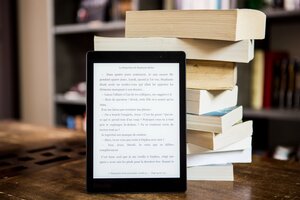 Take up less space
Take up less space
- While I enjoy the sight of a well-stocked bookcase, things can get out of hand. My books take up a lot of space. I have a rule that for every book I buy, I get rid of one either by donation, a garage sale, or selling to a used books store. With e-books, that rule becomes irrelevant depending on how much digital storage space I have. (So far, I have plenty.)
- Acquire instantly
- Browsing through a bookstore is one of the great pleasures in life. I fantasize about living in a neighborhood where I could walk to the local shop to meander among the shelves for hours. But, alas, I must drive to the closest bookseller, which takes time and gas. To acquire an e-book, I simply download the title from the bookseller's or library's website. It is very cool to be reading a new book in seconds from the comfort of my favorite reading chair. Plus, in these pandemic times, it is a great way to get the titles I want without exposure to the risk of illness.
- Less cost
- E-books usually cost less than physical books simply because they cost less to produce. True, an e-reader device must be purchased, but these devices last a long time, and the cost spread over time seems reasonable.
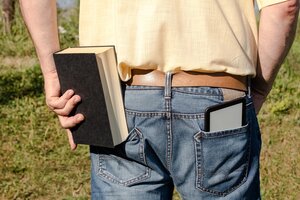 No more lovable luggable
No more lovable luggable
- Hauling a book around can vary from "no big deal" for a small paperback to being a weightlifting contest when reading a long novel or textbook. Most e-readers are very lightweight and can hold many books. This means you can take multiple books with you, and the weight factor doesn't change.
- Let there be light
- E-books can be read in the dark. No need for a flashlight, and the brightness typically can be adjusted.
- Easy on the eyes?
- Some readers dislike reading a screen because of eye strain. On the other hand, fonts and font sizes can be changed, and the words can be either black type on a white background or vice-versa.
- Ditch the dictionary
- I often want to look up a word when I'm reading. With a conventional book, it means pausing to haul out the dictionary. With an e-book, simply highlight the word with your finger or a stylus, and the dictionary definition pops up.
- Search me
- The e-book search function allows the reader to instantly find a word or phrase anywhere in the text.
- Bookmarks the spot
- Most e-readers have a bookmarking feature to help find where you were left off in the book. The bookmarks are usually cataloged in a list for easy searching.
- Highlighting and annotation on steroids
- Most e-readers allow for electronic highlighting in different colors. Also, some e-readers allow you to type notes about what you are reading. Your highlights and notes are usually listed on a separate screen in the e-reader so you can find them easily. Finally, some e-readers can connect to social media allowing you to post comments about the book.
- Other media along for the ride
- Some e-books have extra features that regular books cannot replicate. For example, the Amazon Kindle has X-Ray, which has additional information about People, Terms, Images. For People, the characters in the book are identified so the reader can be reminded of "who's who". Terms provides definitions of key words used in the book. Images shows illustrations of various kinds.
E-Books – The Minus Side
E-books have a lot of advantages, but they are not perfect.
- It just isn't a book
- An e-book simply doesn't feel like a book. For some, holding a physical book becomes part of the reading experience.
- There's a learning curve
- E-books take some getting used to. Learning to use all the features can take some time.
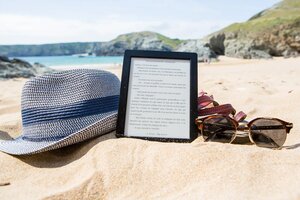 In all kinds of weather
In all kinds of weather
- Even though some e-readers boast weatherproofing, most won't tolerate a dunk in the pool. A wet book can dry out even though it is worse off from the swim.
- You need juice
- E-books depend on electricity. Forgetting to charge your device can result in an unwelcome shutdown just when you're getting the exciting part of the story. Dedicated e-readers do, however, tend to have longer battery longevity than other devices.
- Are we on the same page?
- Many e-books do not have page numbers in the same way as physical books. This is due to how the software arranges the text on the screen and because font sizes can be changed. This can be hard to get used to, especially if a reader is accustomed to referencing a section in a book by page number.
E-Books: All or Nothing?
Does the e-book revolution mean physical books are obsolete? According to Statista, e-books accounted for 19% of all U.S. book sales in 2017, but only 4% said they read e-books exclusively. Age seems to matter when it comes to e-books, however. In 2018, a survey of readers showed 34% of those in the 18-34 age range read at least one e-book in the past 12 months compared to only 15% of those age 65+.
Rather than falling into oblivion along with clay tablets and hieroglyphics, physical books and e-books are liable to co-exist for the foreseeable future. So, take the e-book plunge while continuing to enjoy those colorful rows of physical books on your shelf.
This is Part 2 of the Keeping up with Your Reading in the Digital Age blog series. Click here to read Part 1: Audiobooks!
Subscribe to our blog to receive future posts straight to your inbox!



